A new auto insurance regime in Alberta, direct compensation for property damage (“DCPD”), took effect on January 1, 2022. This new regime was a result of legislative amendments made to the Insurance Act by Bill 41: Insurance (Enhancing Driver Affordability and Care) Amendment Act, 2020.
DCPD is part of the mandatory auto insurance required in Alberta, and replaces the property damage portion of Albertans’ previous auto insurance policies for third party liability coverage. These amendments were intended to make vehicle damage claims more efficient to process. Under a DCPD regime, vehicle owners in Alberta who are not at fault in collisions will work directly with their own insurer to make a claim instead of making a claim with the other party’s insurer. As such, DCPD was intended to (1) eliminate red tape between insurers and (2) reduce costs associated with recovering damages from third parties.
How does DCPD work?
- DCPD coverage is mandatory in Alberta. It does not replace collision and/or loss of use coverage for vehicles, which are optional for vehicle owners.
- DCPD is already used in almost every province in Canada.
- Vehicle owners’ insurance coverage automatically switched to DCPD as of January 1, 2022, and policy holders are not required to do anything further to be covered under the DCPD regime.
- DCPD will cover the cost of vehicle damage, damage to contents, and loss of use costs in the event of a collision where (1) the vehicle owner is 100% not at fault, or (2) for a portion of the repairs based on the percentage a vehicle owner is at fault for an accident.
- If a vehicle owner is 100% at fault in a collision, the owner’s vehicle repairs will not be covered by DCPD but by optional collision coverage (if the owner retains collision coverage). Collision coverage must be used for vehicle damage where the driver is at-fault in a collision (or for the portion that a vehicle owner is at fault and not covered by DCPD), collisions involving uninsured vehicles, and hit-and-runs. Where a vehicle owner does not have collision coverage, they will have to pay out of pocket for such repairs.
- Making a DCPD claim where the vehicle owner is 100% not at fault in an accident will not affect the owner’s claims profile or result in higher premiums. However, premiums and a driver’s record will still almost certainly be affected for an owner’s partially or completely at-fault claims.
- Vehicle owners will pay premiums based on what vehicle they drive. Owners of less expensive vehicles that cost less to repair will generally pay less for their vehicle insurance. More expensive vehicles generally cost more to repair. This was intended to result in a more fair system of calculating premiums based on the value of the vehicle.
- According to the Automobile Insurance Rate Board, 15% of auto insurance policyholders will see no change to their policy premiums, 42% will see a decrease, and 43% will see a premium increase as a result of the change to DCPD coverage.
- Vehicle owners covered under DCPD in a collision will not have to wait for the other driver’s insurance company to start the process for repairs, resulting in a more efficient way to process claims.
What coverage is excluded from the DCPD regime?
DCPD coverage will not apply to:
- an insured’s right to recover for physical damage coverage in respect of the insured vehicle;
- damage to vehicle contents that are being carried for reward;
- if both or all of the vehicles are owned by the same person;
- damage to a vehicle owned by the insured or to its contents if the damage is caused by the insured while driving another automobile; and
- any loss or damage sustained before the DCPD regime comes into force.
How is fault calculated under DCPD?
- The degree of fault of the insured for loss of use or damage is determined by an insurer according to the DCPD Regulation; and
- The degree to which an insured is at fault must be determined without reference to
- the circumstances in which the accident occurs, including weather conditions, visibility or the actions of pedestrians, and
- the location or locations of any point of contact between the insured’s automobile or its load and any other automobile or the load of that automobile involved in the accident.
- Examples of the fault determinations for different accident examples can be found here for more information.
CARSCALLEN LLP’S INSURANCE AND TORT LIABILITY EXPERTISE
Our team of insurance and tort liability lawyers has a range of experience in all types of negotiation, litigation, and mediation in the area of insurance and tort liability, including private and court-mandated mediation, and can bring an effective compromise to any dispute. Our team’s expertise in this area helps to ensure that claims and disputes are settled quickly, with fair and reasonable compensation. Our familiarity with the insurance industry allows us to assess the likelihood of bringing claims to resolution and to structure them in a way that streamlines their progress through to settlement. Where compromise is not possible, we have the experience necessary to successfully represent clients at all levels of court and before any administrative tribunal or mediator. Please contact any member of our insurance and tort liability group for any insurance law, personal injury or tort liability questions or matters you may have.
*This update is intended for general information only on the subject matter and is not to be taken as legal advice.

